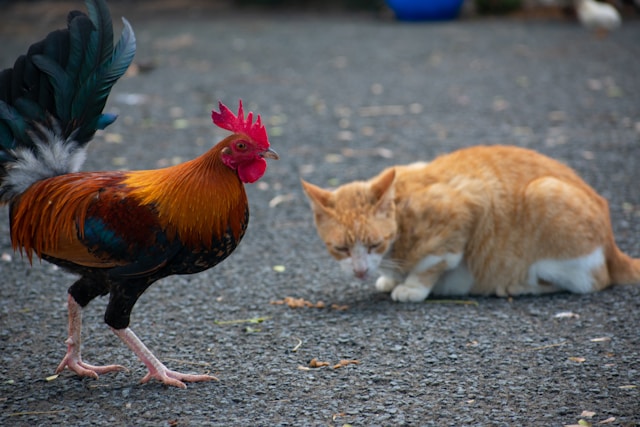
Bird Flu in Cats: Essential Facts You Should Know
When you hear “bird flu,” you probably think of poultry or wild birds—but did you know that it can also affect your feline friends? While rare, there have been confirmed cases of bird flu in domestic cats, and as outbreaks of avian influenza continue to spread globally, it’s important for pet parents to stay informed.
Here’s everything you need to know about bird flu in cats—how it happens, what the symptoms are, and how to protect your pet.
What Is Bird Flu?
Bird flu, or avian influenza, is a contagious viral infection that primarily affects birds. The most concerning strain is H5N1, known for its severity and potential to infect other species—including humans and some mammals.
Cats can become infected with H5N1 if they come into contact with infected birds, consume raw infected poultry, or are exposed to contaminated environments.
Can Cats Really Catch Bird Flu?
Yes—although it’s uncommon, cats can contract bird flu, especially during large outbreaks among birds. Infections in cats have been documented in several countries, often in areas where cats had access to infected wild birds or poultry.
Recent reports (including those from 2023 and 2024) have raised alarms as domestic cats have tested positive in some parts of Europe, Asia, and North America. This makes awareness and prevention increasingly important.
Symptoms of Bird Flu in Cats
If a cat contracts avian influenza, symptoms may develop within a few days of exposure. Common signs include:
- Fever
- Coughing or labored breathing
- Runny nose or eyes
- Lethargy or weakness
- Loss of appetite
- Vomiting or diarrhea (less common)
- Neurological signs (e.g., tremors, seizures) in severe cases
If you notice these symptoms—especially after your cat has been near birds or outdoors—it’s essential to contact your veterinarian right away.
How Is It Diagnosed?
Veterinarians can test for bird flu using nasal or throat swabs, which are then analyzed in specialized labs. Because the virus can be dangerous and contagious, a suspected case may trigger public health measures or wildlife monitoring if birds are involved.
How to Protect Your Cat
Prevention is key. Here are some simple but effective steps:
- Keep your cat indoors, especially during local outbreaks among birds.
- Avoid feeding raw poultry or allowing your cat to scavenge.
- Prevent contact with sick or dead birds—don’t let your cat roam in areas with bird flu warnings.
- Stay informed through your local veterinary authority or health department during outbreaks.
If you keep backyard chickens, ensure they’re healthy and housed in clean, secure enclosures away from your pets.
Is Bird Flu Contagious from Cats to Humans?
Currently, there’s no solid evidence that cats can easily transmit bird flu to humans. However, since H5N1 is a zoonotic virus (meaning it can cross species), it’s better to be cautious. Wash your hands after handling sick animals, and avoid direct contact if your cat appears unwell.
When to See a Vet
If your cat shows flu-like symptoms and has been exposed to birds, call your vet immediately. Early detection can help reduce the risk of complications and prevent further spread. Be sure to mention any wildlife or poultry exposure.
Final Thoughts
While bird flu in cats is rare, it’s not impossible—especially with recent global outbreaks. Staying informed, taking preventative measures, and acting quickly if your cat seems sick are the best ways to protect your feline friend.
Being a responsible cat parent means staying ahead of emerging health threats. And as always, a little extra caution can go a long way in keeping your pet safe and healthy.
Photo by Derek Chang on Unsplash
